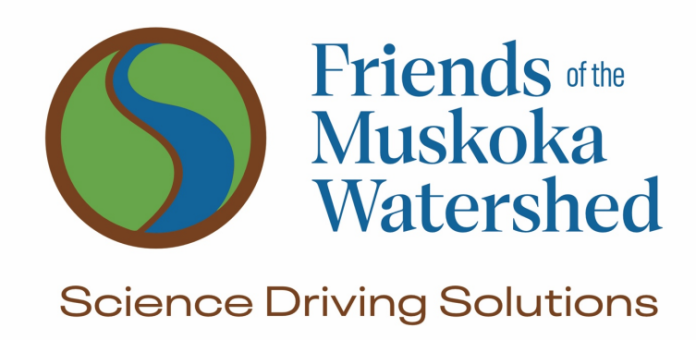Citizen science is making a difference. It’s impacting Muskoka’s road salt research and future plans for Friends of the Muskoka Watershed (FOTMW)’s SALTYMuskoka education project. Dr. Neil Hutchinson, science director and FOTMW board member, completed the report: Citizen Science Observations on Road Salt in Muskoka.
We know that lakes in Muskoka are threatened with toxic chloride from our use of road salt. Data from eight citizen scientists testing in 27 different locations over two years, highlights important sources for rising chloride readings and records some levels that are of concern. The study enforced the value of citizen science and what it can accomplish. The learnings can be applied to work in FOTMW’s SALTYMuskoka program to inform residents on how to reduce road salt pollution.
“Our big finding, which wasn’t really a surprise, was that it’s possible to pinpoint those areas of high salt loading by using measurements made by citizen scientists and thinking about where the sources might be,” he says. Lakes with elevated chloride levels all have major winter-maintained highways or urban areas in their immediate catchments and road salt is applied to these areas in winter. While this much is known, it is important to pinpoint areas in the watershed with much higher chloride levels than others.
“We had eight citizen scientists sampling in 27 different places, measuring conductivity as a surrogate for road salt,” he says. A conductivity meter is used to determine salt levels by measuring a solution’s ability to conduct electricity, which is directly related to the concentration of dissolved ions, including those from salt. The more salt in a solution, the higher its conductivity.
Of the 27 locations, four were significant contributors of chloride. “We learned that in some places in Gravenhurst and Bracebridge, the road salt coming off a parking lot has about half the seawater concentration of chloride. We know that water that is this salty is harmful to Muskoka’s aquatic life,” explains Hutchinson. This serious input of road salt can have harmful effects on many of the animals living in our lakes, as well as our cars, our clothes, our pet’s feet and our infrastructure.”
“When one looks at the watershed report cards by the Muskoka Watershed Council, it can be seen that certain areas like Gravenhurst Bay are getting worse over time,” he says. “That’s because of this accumulation of road salt.”
Hutchinson’s report recognizes the value of citizen scientists. “Citizen scientists can do a lot more than any one scientist can do on their own,” he explains. “We have an army of people that can go down to the foot of their driveway and make an observation and measurements. They can go down to the nearest storm drain or creek, and they can do that frequently because it’s close to where they live.”
Citizen scientists take a personal interest in their project and research. “They take that interest forward,” he says. “I think that sometimes politicians get tired of hearing bad news from scientists but when they hear that from the average citizen, they are more inclined to pay attention.”
SALTYMuskoka is a new Friends of the Muskoka Watershed education and outreach program to help people identify and manage road salt pollution in their areas. Alesha Breckenridge, FOTMW’s SALTYMuskoka Project Lead will use this citizen science report. “This study will guide our educational programming for SALTYMuskoka. The goal is to empower people to learn how to reduce their personal road salt use to protect our watershed,” says Breckenridge. Please see the link to Dr. Hutchinson’s report here. FMW2025-02AR – Road Salt Pollution in Muskoka.pdf








